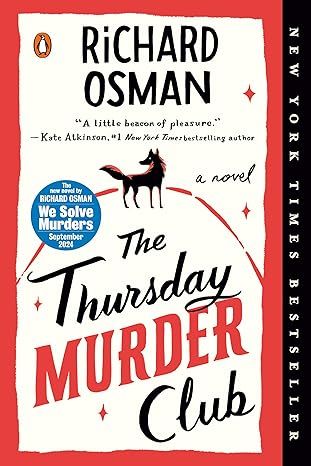NexusHardcover
4.3
-
306 ratings
#1 NATIONAL BESTSELLER • NEW YORK TIMES BESTSELLER • From the author of Sapiens comes the groundbreaking story of how information networks have made, and unmade, our world.
“Masterful and provocative.”—Mustafa Suleyman
For the last 100,000 years, we Sapiens have accumulated enormous power. But despite all our discoveries, inventions and conquests, we now find ourselves in an existential crisis. The world is on the verge of ecological collapse. Misinformation abounds. And we are rushing headlong into the age of AI – a new information network that threatens to annihilate us. If we are so wise, why are we so self-destructive?
NEXUS considers how the flow of information has shaped us, and our world. Taking us from the Stone Age through the Bible, early modern witch-hunts, Stalinism, Nazism and the resurgence of populism today, Yuval Noah Harari asks us to consider the complex relationship between information and truth, bureaucracy and mythology, wisdom and power. He explores how different societies and political systems have wielded information to achieve their goals, for good and ill. And he addresses the urgent choices we face as non-human intelligence threatens our very existence.
Information is not the raw material of truth; neither is it a mere weapon. NEXUS explores the hopeful middle ground between these extremes, and of rediscovering our shared humanity.
Kindle
$15.99
Available instantly
Audiobook
$0.00
with membership trial
Hardcover
$24.49
Paperback
$32.11
Ships from
Amazon.com
Payment
Secure transaction
ISBN-10
191171709X
ISBN-13
978-1911717096
Print length
528 pages
Language
English
Publisher
RANDOM HOUSE UK
Publication date
September 05, 2024
Dimensions
5.98 x 1.54 x 9.21 inches
Item weight
1.41 pounds
Product details
ASIN :
B0CRP6SPL1
File size :
6177 KB
Text-to-speech :
Enabled
Screen reader :
Supported
Enhanced typesetting :
Enabled
X-Ray :
Enabled
Word wise :
Enabled
Editorial reviews
Review
“Yuval Noah Harari has a unique ability to unite history’s finest details and its grandest megatrends in a single view. In this masterful and provocative new book, he makes a compelling case that information networks are—and always have been—the primary driving force shaping human societies. This deeply important book comes at a critical time as we all think through the implications of AI and automated content production.”—Mustafa Suleyman
“Harari draws on history, philosophy, science, psychology, and political theory to present a plethora of examples of information as the current running beneath all human endeavor. Indeed, it is Harari's genius to untangle complex patterns to reveal complicated structures while illuminating the connections to our everyday lives. An important and timely must-read as our survival is at the mercy of information.”—Booklist, starred review
“Confronting the avalanche of books on the prospects of AI, readers would do well to begin with this one.”—Kirkus Reviews, starred review
About the Author
Professor Yuval Noah Harari is a historian, philosopher, and the bestselling author of Sapiens: A Brief History of Humankind, Homo Deus: A Brief History of Tomorrow, 21 Lessons for the 21st Century, and the series Sapiens: A Graphic History and Unstoppable Us. He is considered one of the world’s most influential public intellectuals working today. Born in Israel in 1976, Harari received his Ph.D. from the University of Oxford in 2002 and is currently a lecturer at the Department of History at the Hebrew University of Jerusalem. He co-founded the social impact company Sapienship, focused on education and media, with his husband, Itzik Yahav.
Read more
Sample
Chapter 1
What Is Information?
It is always tricky to define fundamental concepts. Since they are the basis for everything that follows, they themselves seem to lack any basis of their own. Physicists have a hard time defining matter and energy, biologists have a hard time defining life, and philosophers have a hard time defining reality.
Information is increasingly seen by many philosophers and biologists, and even by some physicists, as the most basic building block of reality, more elementary than matter and energy. No wonder that there are many disputes about how to define information, and how it is related to the evolution of life or to basic ideas in physics such as entropy, the laws of thermodynamics, and the quantum uncertainty principle. This book will make no attempt to resolve—or even explain—these disputes, nor will it offer a universal definition of information applicable to physics, biology, and all other fields of knowledge. Since it is a work of history, which studies the past and future development of human societies, it will focus on the definition and role of information in history.
In everyday usage, “information” is associated with human-made symbols like spoken or written words. Consider, for example, the story of Cher Ami and the Lost Battalion. In October 1918, when the American Expeditionary Forces was fighting to liberate northern France from the Germans, a battalion of more than five hundred American soldiers was trapped behind enemy lines. American artillery, which was trying to provide them with cover fire, misidentified their location and dropped the barrage directly on them. The battalion’s commander, Major Charles Whittlesey, urgently needed to inform headquarters of his true location, but no runner could break through the German line. According to several accounts, as a last resort Whittlesey turned to Cher Ami, an army carrier pigeon. On a tiny piece of paper, Whittlesey wrote, “We are along the road paralell [sic] 276.4. Our artillery is dropping a barrage directly on us. For heaven’s sake stop it.” The paper was inserted into a canister on Cher Ami’s right leg, and the bird was released into the air. One of the battalion’s soldiers, Private John Nell, recalled years later, “We knew without a doubt this was our last chance. If that one lonely, scared pigeon failed to find its loft, our fate was sealed.”
Witnesses later described how Cher Ami flew into heavy German fire. A shell exploded directly below the bird, killing five men and severely injuring the pigeon. A splinter tore through Cher Ami’s chest, and his right leg was left hanging by a tendon. But he got through. The wounded pigeon flew the forty kilometers to division headquarters in about forty-five minutes, with the canister containing the crucial message attached to the remnant of his right leg. Though there is some controversy about the exact details, it is clear that the American artillery adjusted its barrage, and an American counterattack rescued the Lost Battalion. Cher Ami was tended by army medics, sent to the United States as a hero, and became the subject of numerous articles, short stories, children’s books, poems, and even movies. The pigeon had no idea what information he was conveying, but the symbols inked on the piece of paper he carried helped save hundreds of men from death and captivity.
Information, however, does not have to consist of human-made symbols. According to the biblical myth of the Flood, Noah learned that the water had finally receded because the pigeon he sent out from the ark returned with an olive branch in her mouth. Then God set a rainbow in the clouds as a heavenly record of his promise never to flood the earth again. Pigeons, olive branches, and rainbows have since become iconic symbols of peace and tolerance. Objects that are even more remote than rainbows can also be information. For astronomers the shape and movement of galaxies constitute crucial information about the history of the universe. For navigators the North Star indicates which way is north. For astrologers the stars are a cosmic script, conveying information about the future of individual humans and entire societies.
Of course, defining something as “information” is a matter of perspective. An astronomer or astrologer might view the Libra constellation as “information,” but these distant stars are far more than just a notice board for human observers. There might be an alien civilization up there, totally oblivious to the information we glean from their home and to the stories we tell about it. Similarly, a piece of paper marked with ink splotches can be crucial information for an army unit, or dinner for a family of termites. Any object can be information—or not. This makes it difficult to define what information is.
The ambivalence of information has played an important role in the annals of military espionage, when spies needed to communicate information surreptitiously. During World War I, northern France was not the only major battleground. From 1915 to 1918 the British and Ottoman Empires fought for control of the Middle East. After repulsing an Ottoman attack on the Sinai Peninsula and the Suez Canal, the British in turn invaded the Ottoman Empire, but were held at bay until October 1917 by a fortified Ottoman line stretching from Beersheba to Gaza. British attempts to break through were repulsed at the First Battle of Gaza (March 26, 1917) and the Second Battle of Gaza (April 17–19, 1917). Meanwhile, pro-British Jews living in Palestine set up a spy network code-named NILI to inform the British about Ottoman troop movements. One method they developed to communicate with their British operators involved window shutters. Sarah Aaronsohn, a NILI commander, had a house overlooking the Mediterranean. She signaled British ships by closing or opening a particular shutter, according to a predetermined code. Numerous people, including Ottoman soldiers, could obviously see the shutter, but nobody other than NILI agents and their British operators understood it was vital military information. So, when is a shutter just a shutter, and when is it information?
The Ottomans eventually caught the NILI spy ring due in part to a strange mishap. In addition to shutters, NILI used carrier pigeons to convey coded messages. On September 3, 1917, one of the pigeons diverted off course and landed in—of all places—the house of an Ottoman officer. The officer found the coded message but couldn’t decipher it. Nevertheless, the pigeon itself was crucial information. Its existence indicated to the Ottomans that a spy ring was operating under their noses. As Marshall McLuhan might have put it, the pigeon was the message. NILI agents learned about the capture of the pigeon and immediately killed and buried all the remaining birds they had, because the mere possession of carrier pigeons was now incriminating information. But the massacre of the pigeons did not save NILI. Within a month the spy network was uncovered, several of its members were executed, and Sarah Aaronsohn committed suicide to avoid divulging NILI’s secrets under torture. When is a pigeon just a pigeon, and when is it information?
Clearly, then, information cannot be defined as specific types of material objects. Any object—a star, a shutter, a pigeon—can be information in the right context. So exactly what context defines such objects as “information”? The naive view of information argues that objects are defined as information in the context of truth seeking. Something is information if people use it to try to discover the truth. This view links the concept of information with the concept of truth and assumes that the main role of information is to represent reality. There is a reality “out there,” and information is something that represents that reality and that we can therefore use to learn about reality. For example, the information NILI provided the British was meant to represent the reality of Ottoman troop movements. If the Ottomans massed ten thousand soldiers in Gaza—the centerpiece of their defenses—a piece of paper with symbols representing “ten thousand” and “Gaza” was important information that could help the British win the battle. If, on the other hand, there were actually twenty thousand Ottoman troops in Gaza, that piece of paper did not represent reality accurately, and could lead the British to make a disastrous military mistake.
Put another way, the naive view argues that information is an attempt to represent reality, and when this attempt succeeds, we call it truth. While this book takes many issues with the naive view, it agrees that truth is an accurate representation of reality. But this book also holds that most information is not an attempt to represent reality and that what defines information is something entirely different. Most information in human society, and indeed in other biological and physical systems, does not represent anything.
I want to spend a little longer on this complex and crucial argument, because it constitutes the theoretical basis of the book.
Read more
About the authors
Yuval Noah Harari
Prof. Yuval Noah Harari (born 1976) is a historian, philosopher and the bestselling author of 'Sapiens: A Brief History of Humankind' (2014); 'Homo Deus: A Brief History of Tomorrow' (2016); '21 Lessons for the 21st Century' (2018); the children's series 'Unstoppable Us' (launched in 2022); and 'Nexus: A Brief History of Information Networks from the Stone Age to AI' (2024). He is also the creator and co-writer of 'Sapiens: A Graphic History': a radical adaptation of 'Sapiens' into a graphic novel series (launched in 2020), which he published together with comics artists David Vandermeulen (co-writer) and Daniel Casanave (illustrator). These books have been translated into 65 languages, with 45 million copies sold, and have been recommended by Barack Obama, Bill Gates, Natalie Portman, Janelle Monáe, Chris Evans and many others. Harari has a PhD in History from the University of Oxford, is a Lecturer at the Hebrew University of Jerusalem's History department, and is a Distinguished Research Fellow at the University of Cambridge’s Centre for the Study of Existential Risk. Together with his husband, Itzik Yahav, Yuval Noah Harari is the co-founder of Sapienship: a social impact company that advocates for global collaboration, with projects in the realm of education and storytelling.
Read more
Reviews
Customer reviews
4.3 out of 5
306 global ratings
Tracy
5
Informed, Realistic Perspective on the AI Revolution and Its Dangers
Reviewed in the United States on September 21, 2024
Verified Purchase
Harari outlines the historical context of some of the most important types of information technology breakthroughs, along with their unintended bright sides and dark sides. The printing press led to witch-hunts. Radio led to the Great Terror. Newspapers led to Dutch democracy. The book is masterful in its broad survey of information networks and how critical they are to political regimes, which, in the era of AI, stand to breed utter mayhem.
It's an absolute must-read for politicians, tech founders, computer and AI engineers, and laypeople as well.
I appreciate his realistic approach. Blind optimism to this technology and errant false equivalencies with past technological revolutions are dangerously myopic. This technology is more transformative than the agricultural revolution and the printing press - which Harari drills home.
He isn't a pessimist though. The whole point of the book is to urge regulators, policy-makers, media, tech founders, engineers, heads of competing states to cooperate so we can avoid chaos and collapse of human civilization - if not its entire extinction.
Read more
3 people found this helpful
William Orr
5
Fantastic Book
Reviewed in the United States on September 20, 2024
Verified Purchase
I particularly love this author’s work. This book clearly lays out humanity and its development of communication. The encompasses both good and bad. The book reaches where contemporary society is at with AI and its implications on our continued survival as a species on this planet. The call is here.
Edward Sacco
5
AI, an alien Intelligence?
Reviewed in the United States on September 23, 2024
Verified Purchase
The only constant of life is change is my take from Harari’s take on history. He believes in the possibility of positive changes while giving dangerous results of inherited world view. His focus on information as a driving force of history. Things that many believe are natural and eternal are human made and we Can create a better world by paying attention to history.
Read more
2 people found this helpful
Top Yuval Noah Harari titles
View allBest sellers
View all
The Tuscan Child
4.2
-
100,022
$8.39

The Thursday Murder Club: A Novel (A Thursday Murder Club Mystery)
4.3
-
155,575
$6.33

Sapiens: A Brief History of Humankind
4.6
-
140,302
$13.49

The Butterfly Garden (The Collector, 1)
4.3
-
88,556
$9.59

Things We Hide from the Light (Knockemout Series, 2)
4.4
-
94,890
$11.66

The Last Thing He Told Me: A Novel
4.3
-
154,085
$2.99

The Perfect Marriage: A Completely Gripping Psychological Suspense
4.3
-
143,196
$9.47

The Coworker
4.1
-
80,003
$13.48

First Lie Wins: A Novel (Random House Large Print)
4.3
-
54,062
$14.99

Mile High (Windy City Series Book 1)
4.4
-
59,745
$16.19

Layla
4.2
-
107,613
$8.99

The Locked Door
4.4
-
94,673
$8.53




